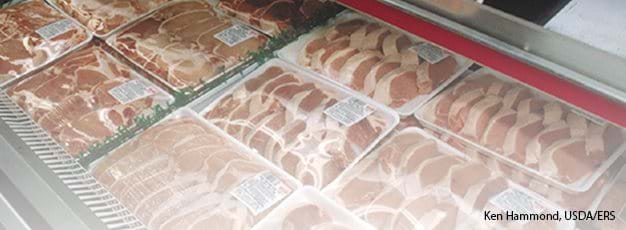Slow Price Adjustments Benefit Beef and Pork Producers

'Price spreads'—the difference between what consumers pay for food and what the farmer earns for the raw material producing it—have trended upward but fluctuated widely over the past 10 years. These trends raise suspicions that intermediaries are taking undue profits at the expense of farmers and consumers. A recent ERS report analyzes price spreads for beef and pork and their impacts on livestock prices.
Price spreads fluctuate a great deal from month to month. These fluctuations are consistent with partial or “dynamic” price adjustment. In other words, farm prices respond slowly to changes in supply and demand conditions. Dynamic price adjustment makes beef and pork prices more stable than they would be if prices adjusted quickly. But price spreads are less stable as a result, since farm, wholesale, and retail prices adjust at different rates. Farm, wholesale, and retail prices for beef and pork also show “asymmetric” price adjustment—prices adjust more rapidly when they are increasing than when they are decreasing.
It takes 2 months for the farm price of hogs to fully adjust to price-increasing changes and 5 months to price-decreasing changes. Cattle prices adjust more slowly: increases take 18 months and decreases 29 months. The slow rate and asymmetric nature of price adjustment could be considered evidence of problems in the flow of information through the markets. Ironically, however, improved information flows and speedier price adjustment might not help livestock producers. Because prices adjust more quickly upward than downward, actual livestock prices tend to be higher than prices would be if they adjusted more rapidly. The slow and asymmetric adjustment of cattle prices keeps them about 4 percent higher on average than they would be under complete adjustment. Hog prices average around 1 percent higher.
Beef and Pork Values and Price Spreads Explained, by William Hahn, USDA, Economic Research Service, May 2004

